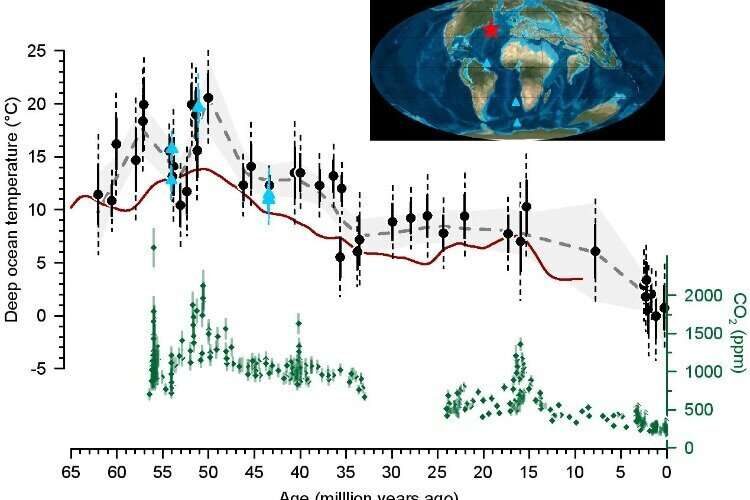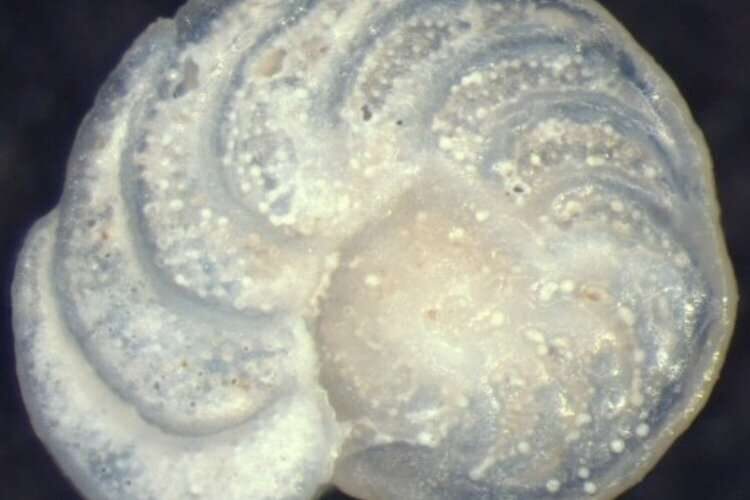
A new study of ancient ocean temperatures, published today in Science, shows that the deep North Atlantic Ocean was once 20°C (68 °F) — warmer than the surface of the modern Mediterranean.
"Today the deep ocean is filled with icy cold waters," said Dr. James Rae from the University of St Andrews, who co-authored the study, "but 50 million years ago it was as warm as the Mediterranean is today."
The international team, including scientists from Norway, the Netherlands, Switzerland and the U.S., used the chemical fingerprints of tiny fossil shells from deep-sea mud cores to reconstruct ancient ocean temperatures. Using state-of-the-art new laboratory measurements, they were able to obtain the most accurate temperature estimates to date, showing that temperatures were warmer — and more variable — than previously thought.
Professor Nele Meckler, of the University of Bergen, who led the study, explained: "We looked at the way that different atoms of carbon and oxygen were clumped together in these ancient shells, which turns out to be a really accurate method of working out the temperature at the time the shells were formed."

The temperatures of 20°C for the deep North Atlantic come from a time called the Eocene, about 15 million years after the end of the dinosaurs, when atmospheric CO2 was around three times higher than today. Previous fossil indicators have shown that this time was characterized by super warm temperatures, with palm trees and crocodiles inhabiting the Arctic, and the new study shows that this extreme warmth was also felt in the depths of the ocean.
Comment: However there's evidence that the Earth has shifted on its axis since then:
Dr. Rae said: "These ancient greenhouse climates may seem a long way removed from today, but they are critical in helping us understand the impact of CO2 on climate change."
Comment: Not quite, because CO2 doesn't cause climate change; the drivers of climate change on our planet are much more significant, such as cosmic catastrophes, and our planet's interaction with our sun.
"CO2 has transformed the face of our planet before, and unless we limit emissions as soon as possible, it will do it again."
More information: A. N. Meckler et al, Cenozoic evolution of deep ocean temperature from clumped isotope thermometry, Science (2022). DOI: 10.1126/science.abk0604
Journal information: Science



Comment: Could there also be other factors to consider that caused some regions to be warming? Such as higher elevation of the land, or, as has been documented at the poles, ice has been melting due to undersea volcanoes, and, over at Lake Erie, the depths of which have been noted to have been warming.
See also:
- Volcanoes, Earthquakes And The 3,600 Year Comet Cycle
- Researchers find depths of Pacific Ocean cooling, possibly linked to Little Ice Age
- Mammoth site is over 100,000 years older than previously thought - And the climate was warmer than it is today
And check out SOTT radio's: Behind the Headlines: Earth changes in an electric universe: Is climate change really man-made?